The Bubbly Mindset...
Toyota's Green Image Isn't What You Think. For One, Where Are The Electric Vehicles?
In 2000, Toyota was at the cutting edge of automobile technology with its brand new hybrid Prius. Now, over 20 years later, Toyota – once the leader in climate friendly vehicles – is at the back of the pack and hiding behind the green vision they once led.
The fact is: a hybrid today is not green technology. The Prius hybrid runs on a pollution-emitting combustion engine found in any gas-powered car. Ironically, Toyota misleads about its existing Prius technology by borrowing electric vehicle descriptions: Toyota touts that the Prius is self-charging and that there is "no need to plug in."
But plugging in is essential for improving air quality and slashing climate pollution. As the transportation industry is the single largest source of greenhouse gas emissions in the US, we must accelerate the transition to electric vehicles (EVs). Rather than invest in EVs, though, Toyota is putting corporate profits and the status quo over tackling the climate crisis.
Founded in 1937 in Japan, Toyota is celebrating its 85th anniversary this month. And while many of Toyota's competitor automakers are releasing one electric vehicle after another and putting their money and workforce behind EV models, Toyota is behind the times. It is still hiding behind a decades-old definition of a “green” automaker built on outdated car technology and promoting an extended role for gas-powered hybrid vehicles over the long-term.
In fact, Toyota is actively blocking the transition to electric vehicles through its hardline stance and lobbying on a global scale against them. In just the past three years, Toyota lobbied against clean car regulations twice, once in 2019 and again in 2021. Toyota even refused to sign the global pledge made at the U.N. Climate Change Conference (COP26) in 2021 to phase out dirty, gas vehicles by 2035.
Yet even so, Toyota touts itself as the king of hybrids to bolster its so-called "green image” when, in reality, Toyota is the king of trucks and SUVs. At Toyota dealerships, the vehicles on display aren't Priuses, but Tacomas and Tundras. Toyota's first electric truck is expected to be the electric Tacoma, not to be released until 2024… at which point consumers could choose from a Tacoma EV, hybrid or gas truck.
Toyota could sell only electrified versions of their more popular models – competitors like Ford are selling out of their new all-electric trucks and SUVs within hours of offering pre-orders. Instead, Toyota is continuing to sell gas-powered hybrid SUVs but borrowing the language of electric cars, highlighting “range” and “charging” but failing to point out that their hybrids still require gas and cause enormous amounts of toxic air pollution.
Toyota has promised to release at least 30 EVs by 2030, but it only has the bZ4X for sale in the US – and it’s not even available right now. Toyota has promised to sell 3.5 million electric vehicles per year by 2030, but that would only account for one third of the company's current vehicle sales.
We've got news for you, Toyota: US consumers are showing that they are ready for plug-in fully electric vehicles. Electric vehicles aren't the future, they are the present.
In July, Bloomberg reported that the US just surpassed the "critical EV tipping point," meaning that five percent of new car sales are powered only by electricity. In 18 other countries, this statistic has been a key predictor of mass electric vehicle adoption. If this proves to be true in the US, a quarter of new car sales would be electric by the end of 2025. The question now is if Toyota is ready and willing to meet consumer demand.
Toyota is king only when it comes to dated hybrid cars and gas-guzzling trucks. But for millions of consumers who recognize the value of EVs, buying an electric vehicle from Toyota is not an option. Seriously, Toyota's only electric vehicle on the US market is the bZ4X and they can't even guarantee that the wheels won't fall off mid-ride.
Enough is enough. We need accountability now. As Toyota marks 85 years as a company, they need to remember how they got their “green image” in the first place – and live up to it.
Eighty-five years from now, electric vehicles will be around. Will Toyota?
*****
It seems Hollyweed doesn't LOVE Prius anymore!
What They Aren’t Telling People About EeeeeeeVeeeeeees
Everyone knows – well, everyone has heard – that EeeeeeeeeeeVeeeeeeeeeee are the vehicles for solving what is said to be the “climate crisis” – which is an interesting thing to say, given the EeeeeeeeeeeVeeeeeeeees being produced are much more powerful than they need to be to get people from A to B. That requires huge batteries, to store all the electricity needed to make them go very fast, very quickly.
You’d think that would be discouraged – even banned – if there is a “crisis” looming that is being caused by the “emission” of carbon dioxide. After all, more of the latter is being “emitted” than necessary by the utility plants that generate almost all of the electricity that powers over-powered EeeeeeeeeeeVeeeeeeees.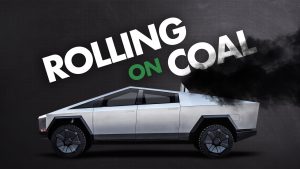
Does anyone need to get 60 in 2.9 seconds? Or even six? If there is a “crisis,” that is. Yet practically every EeeeeeeVeeeeee on the market is designed specifically to use up more power than is needed for bare-minimum or even economy-car-equivalent basic transportation needs.
This tells you something about the true nature of the “crisis” – and those who say it is one. If a ship on the open sea has sprung a leak and is sinking, do you open more holes below the waterline?
There are some other things about EeeeeeeeeeeeVeeeeeeeees they aren’t telling you about as well.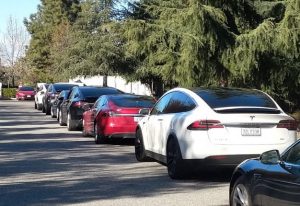
You can’t “fast” charge an EeeeeeeeeVeeeeee at home –
Practically every article gushing about EeeeeeeVeeeeeees will report on the fact that it is possible to “fast”charge an EeeeeeeeeeeVeeee in about 30 minutes. Some will gushingly report that – soon! – you’ll be able to do it in less than 15 minutes. What they never tell you is that you cannot do this at home. Because private homes do not have the capability to “fast” charge an EeeeeeVeeeee. The very “fastest” you can charge an EeeeeeeeeeVeeee at a private home is in around eight-nine hours, on a 240 volt (dryer-type) outlet.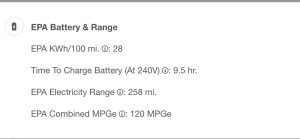
You will never be able to “fast” charge an EeeeeeeeeVeeeee at home. Not without completely rewiring the home to commercial-grade capacity. This means you will always have to drive to wherever the “fast” charger is – and wait there. This means spending time getting to (and from) the “fast” charger. Which means spending more time “fast” charging. Thirty minutes to “fast” charge” ends up being that plus however long it took to drive there, plus the wait there.
And that “15 minutes” – soon! – they also gush about? They do not tell you that while it might be “faster” it is less. As in, not a full recharge. Just enough to get going again. But not very far – before you’ll need to stop (and wait) again.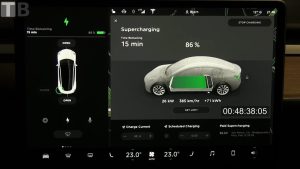
Speaking of which . . .
A “fast” charge is never a full charge –
Whenever you read an article gushing about EeeeeeeeeeeVeeeeees and the miracle of taking at least five times as long to “fast” charge it vs. the five minutes it takes to refuel a non-EeeeeeeeeVeeeeeeee, you will never encounter the disclaimer that the “fast” charge is only 80 percent charged. In other words, you end up with 20 percent less charge than a full charge, which means 20 percent less range . . . which means having to stop (again) 20 percent sooner.
The reason why you cannot – well, should not – “fast” charge an EeeeeeVeeeee to fully charged is because it is hard on the battery, which is the most expensive part of an EeeeeeeeeeeVeeeeee. There is also an increased fire risk. So EeeeeeeeeeeeVeeeeeees (and “fast” chargers) are set up to deliver 80 percent charge “fast” – and the rest, slow.
This 20 percent loss of charge-range – assuming you don’t have time to wait for a full (slow) charge – is probably not a huge big deal if you aren’t going far or have the time to stop and wait (again). But if you’re on a long trip, you’ll be stopping – and waiting – more than you’ve been led to believe you will be.
Speaking of that . . .
The farther you drive, the shorter the service life –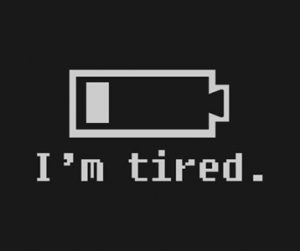
If you drive an EeeeeeeeVeeeeee to the limit of its range, you will have heavily discharged its battery pack. If you want the battery pack to last you should avoid doing this, because regularly discharging a battery is likely to reduce the life of the battery. Meaning, its capacity to hold the charge (and so, deliver the range) it advertised when new. This is why hybrid cars are designed to always keep the battery partially charged. Even so, a hybrid car’s battery pack eventually loses its capacity to hold charge and must be replaced.
But EeeeeeeeeVeeeeees have no gas engine on board to keep the battery from being heavily discharged. This presents a paradox: If you use the EeeeeeeeeVeeeeee’s advertised range you are reducing the battery pack’s service life. Put another way: The EeeeeeeeVeeeeeee’s advertised range is functionally about 30 percent less-than-advertised, if you want to avoid having to spend 30-50 percent as much as the EeeeeeeeeeeeeVeeeeee itself cost you on a replacement battery pack before it is time to replace the EeeeeeeeeeeVeeeeee, itself.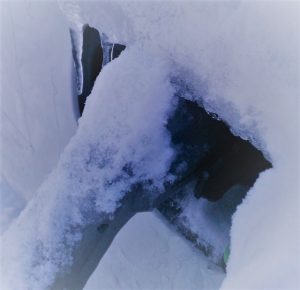
You have probably not heard about this, either. But you really ought to know about it, if you’re thinking about buying an EeeeeeeeVeeeee.
There are some other things to know about EeeeeeeeVeeeees, too.
If you don’t have a garage, where will you plug in your EeeeeeeeeeVeeeeeee? Will you be able to run an extension cord from inside your house – or apartment – to wherever the EeeeeeeeVeeeeee is parked?
Did you know that leaving an EeeeeeeeeeVeeeeeee garaged outside – in the cold – will result in the EeeeeeeeeeeVeeeeeee’s range when you parked it being less when you get up the next day to drive it? This is because EeeeeeeeeeeeeVeeeeeees burn power even when they aren’t being used – because EeeeeeeeeeeeVeeeeeees have powered heating (and cooling) systems that are always on – to keep the battery from getting too cold (or too hot). That means needing to keep the EeeeeeeeeeeVeeeeeeee plugged in, to avoid loss of charge while it’s just sitting – especially if it is sitting outside, in the cold (or heat).
Finally – for those who are considering an EeeeeeeeeeeeeVeeeeeee because they believe that they are thereby reducing their “carbon footprint”: You are probably increasing it. For two reasons.
One, EeeeeeeeeeeeeeeVeeeeeees do not last as long as non-EeeeeeeeeeVeeeeees – because EeeeeeeeeeeVeeeeeeee battery packs do not last as long as non-EeeeeeeeeeeVeeeees do and cost more than it’s worth to replace them when they can no longer power the EeeeeeeeVeeeee. That means a new EeeeeeeeeeeeVeeeeeeeeee sooner. Which means new raw materials (and carbon dioxide “emissions”) to make the new EeeeeeeeeeVeeeeee – which will be just as prematurely disposable as the old EeeeeeeeeeVeeeeee.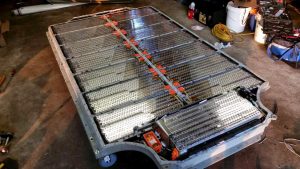
Two, because EeeeeeeeeeeVeeeeeeees are energy hogs. Even the small ones like the Tesla 3 – which is a compact-sized car comparable to a Honda Civic sedan – has more than 1,000 pounds of battery pack, which it uses to deliver the speedy 0-60 times it touts. But that entails a probable doubling of the size of the battery pack that would otherwise be needed to deliver adequate (rather than “ludicrous”) speed – and also uses twice (or more) the power needed to keep it charged up. Almost all of that power – especially the commercial-grade power available at “fast” chargers – produced by combusting lots of natural gas, oil and coal. Resulting in lots of carbon dioxide “emissions.”
So, why aren’t the people hard-selling EeeeeeeeeeVeeeeeees telling people these things? Well, for the same reason the same people didn’t tell the people about the “vaccines” – until after they’d been injected with them.




Comments
Post a Comment